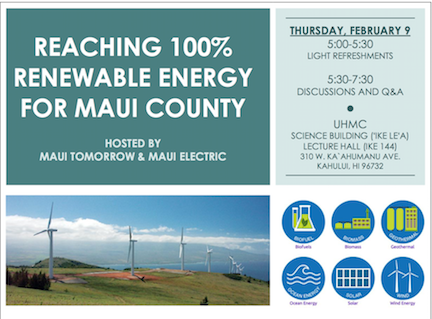Read Life of the Land’s Energy Report
From Sophie Crocker writing for Civil Beat
…The main takeaway: the state can and should be generating 90 percent of its electricity by 2030 from sources such as rooftop solar and small-scale wind that power a single home or neighborhood.
Referred to in the industry as distributed generation, this model is a complete overhaul of the traditional, centralized model of Hawaiian Electric Co., in which electricity is produced from large-scale generators that supply power to residents throughout island-wide electric grids.
In this model, all electricity is generated at or near the site where it is used.
It’s a trend that Curtis says is inevitable as cutting-edge technology advances.
On the near horizon is the capacity to replace yesterday’s electric grid with tomorrow’s Smart Buildings, where conservation and energy efficiency will reduce demand, on-site renewable energy facilities will provide energy for buildings and electricity for vehicles, and small microgrids will be used within small communities.
But as more residents and businesses move to on-site generation and reduce their energy consumption, there are unintended consequences, according to the report. While people with rooftop solar installations can reduce their electricity bills to nearly zero, costs for those left on the grid will only go up as fewer customers have to cover a greater percentage of the utilities’ fixed costs, including generators and transmission lines.
The end result? The death of HECO…
Read the entire article at Civil Beat


